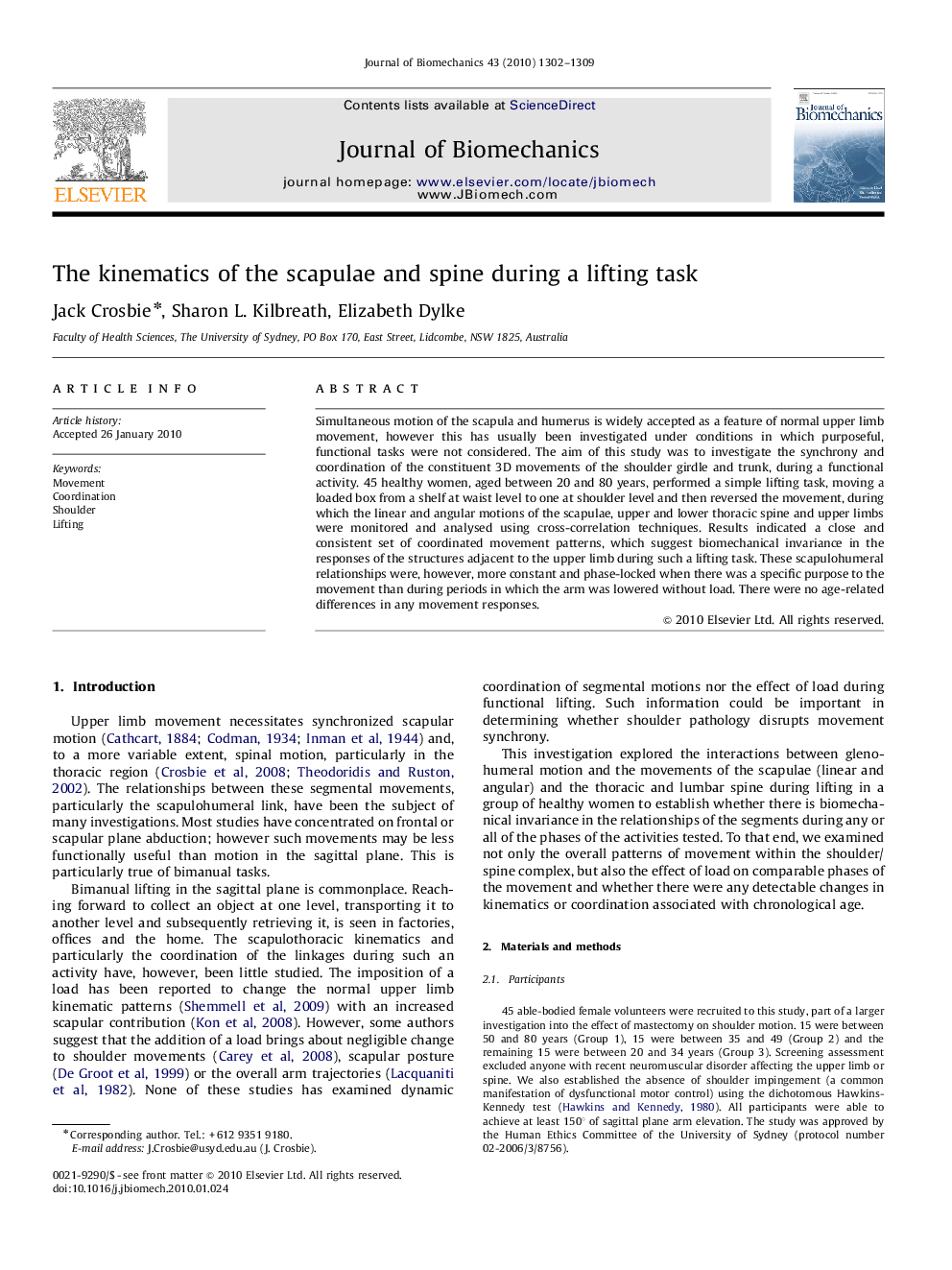| Article ID | Journal | Published Year | Pages | File Type |
|---|---|---|---|---|
| 873660 | Journal of Biomechanics | 2010 | 8 Pages |
Simultaneous motion of the scapula and humerus is widely accepted as a feature of normal upper limb movement, however this has usually been investigated under conditions in which purposeful, functional tasks were not considered. The aim of this study was to investigate the synchrony and coordination of the constituent 3D movements of the shoulder girdle and trunk, during a functional activity. 45 healthy women, aged between 20 and 80 years, performed a simple lifting task, moving a loaded box from a shelf at waist level to one at shoulder level and then reversed the movement, during which the linear and angular motions of the scapulae, upper and lower thoracic spine and upper limbs were monitored and analysed using cross-correlation techniques. Results indicated a close and consistent set of coordinated movement patterns, which suggest biomechanical invariance in the responses of the structures adjacent to the upper limb during such a lifting task. These scapulohumeral relationships were, however, more constant and phase-locked when there was a specific purpose to the movement than during periods in which the arm was lowered without load. There were no age-related differences in any movement responses.
